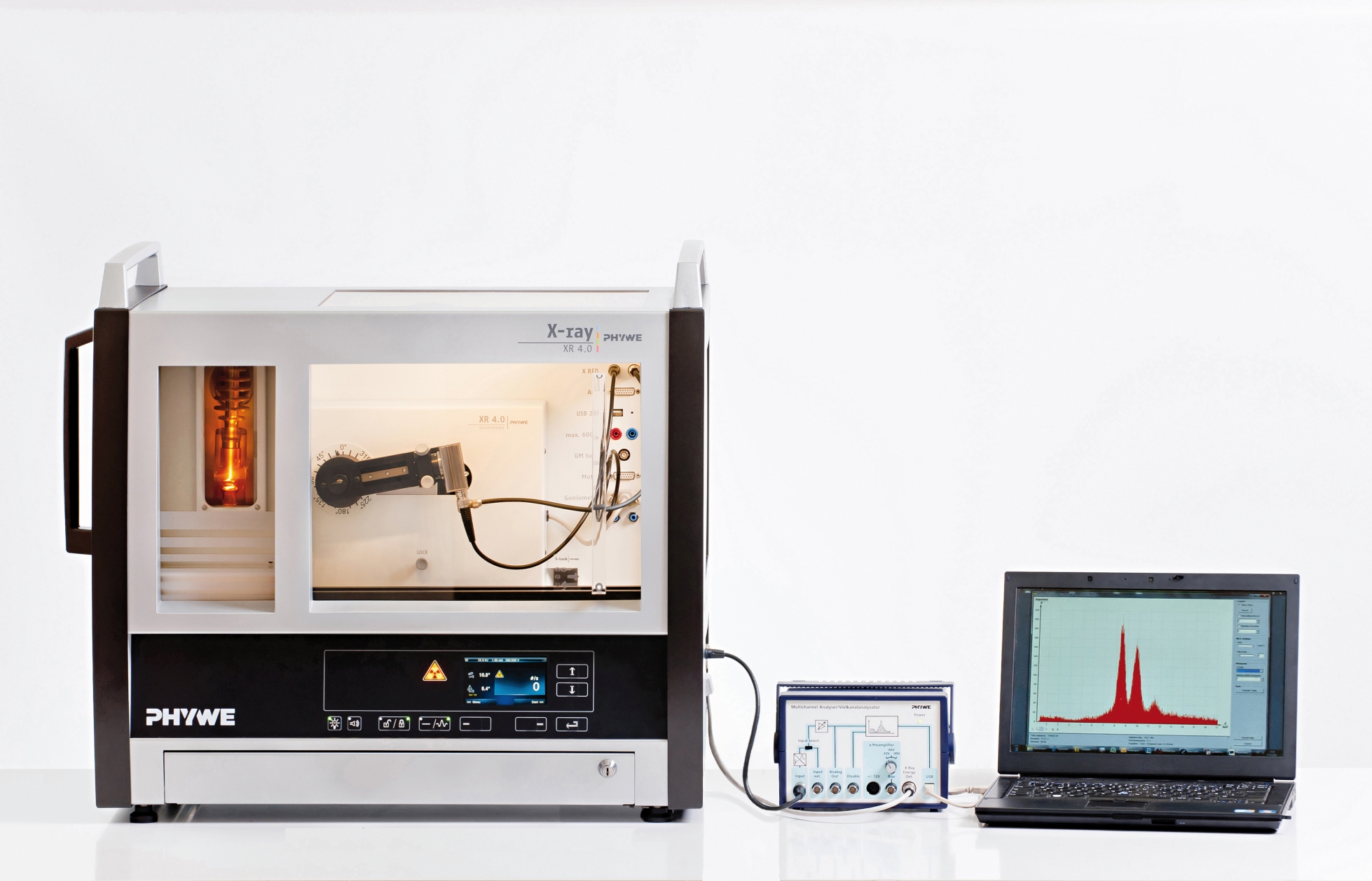Principle
Fluorescence radiation of the elements of a sample can cause fluorescence radiation inside the detector and its housing if the energy is sufficiently high. As a result, the spectrum may include lines that are not caused by the sample. For the detection of potential additional lines, the detector is subjected to monochromatic X-radiation with the aid of a monocrystal. For comparison, the fluorescence spectra of pure metal samples are measured.
Tasks
- Calibrate the semiconductor energy detector with the aid of the characteristic fluorescence radiation of the calibration sample.
- Irradiate the X-ray energy detector with monoenergetic X-rays that are produced by the Bragg reflection on an LiF monocrystal. Measure the resulting fluorescence spectrum.
- Determine of the energy of the spectrum lines.
- Assign the lines to elements by comparing the measured values with table values.
- Comparative measurement and evaluation of the fluorescence spectra of pure metal samples.
Learning objectives
- Bremsstrahlung
- Characteristic X-radiation
- Fluorescence radiation
- Fluorescent yield
- Interference of X-rays
- Crystal structures
- Bragg's law
- Compton scattering
- Escape peaks
- Semiconductor energy detectors
- Multichannel analysers

